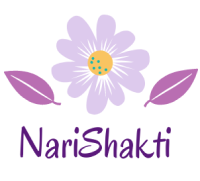
Garbha Sanskar: Managing Pregnancy the Indic way

Garbha Sanskar, rooted in ancient Indian tradition, is a comprehensive prenatal care approach that focuses on the physical, mental, emotional, and spiritual well-being of both the mother and the unborn child. This practice is grounded in the belief, as mentioned in Indic scriptures like the Vedas, that a baby’s mental and behavioral development begins at conception. The term “Garbha” refers to the womb, and “Sanskar” to nurturing.
This tradition, noted for its effectiveness, often results in babies who are happier, cry less, and display better health. It emphasizes the significance of prenatal care in both physical and mental development.
Garbha Sanskar comprises three primary elements: Samvad (communication), Aahar (diet), and Yoga. Each plays a vital role in the baby’s development in the womb.
Sanskriti versus Prakruti
The concept of Garbha Sanskar can be likened to the nature (Prakruti) versus nurture (Sanskriti) analogy. Nature represents the immutable genetic inheritance that determines physical appearance and certain personality traits. Nurture, on the other hand, includes external factors post-birth, such as upbringing and cultural background, which influence behavior and development.
Two identical apple seeds can produce vastly different trees, depending on nurturing factors like soil quality, water availability, and temperature.
While Garbha Sanskar does not alter DNA, it highlights that a mother’s lifestyle and environment can affect the baby, potentially influencing genetic expression.
Garbha Samvad
The mother’s emotions, such as happiness and calmness, are believed to be communicated to the baby, impacting its emotional well-being through chemical processes in the body.
- Positive emotions like joy increase the secretion of beneficial hormones like endorphins and oxytocin, enhancing the baby’s brain development and cognitive abilities such as IQ and memory.
- Conversely, chronic stress hormones like cortisol can have detrimental effects. Practices like meditation help maintain a positive hormonal balance.
It’s crucial to create a nurturing environment rather than constantly striving for positive emotions. Activities like talking, singing, and listening to harmonious music foster a deep connection with the baby and contribute positively to its emotional development.
This practice is grounded in the idea that a baby in the womb is responsive and can be positively influenced by the mother’s actions and emotions.
Connecting through Music
Indian classical music, particularly ragas, is used for its therapeutic impact. Listening to specific ragas for about 10-15 minutes daily is recommended, with each month of pregnancy associated with a particular raga. Apps like Raagya provide easy access to these ragas.
Talking to the Baby
Direct communication with the baby is encouraged, including expressing thoughts and feelings during moments of anger or stress. A nightly ritual of taking deep breaths, placing a hand on the tummy, and rotating it slowly while conveying loving, positive messages can reinforce the bond.
Connecting through Spiritual Practices:
Religious practices during pregnancy can create a serene environment, with Sanskrit chants impacting the baby’s development.
Garba Aahar
The pregnant mother’s diet signals to the baby what nutrients are available externally, influencing physical development.
The concept of diet during pregnancy often carries a negative connotation, focusing on what not to eat. However, it’s crucial to understand the importance of both macro and micronutrients in a pregnant woman’s diet. While supplements like Calcium, Folic Acid, and Iron are mandatory, the significance of micronutrients is often overlooked, yet they play a vital role in the health of both mother and baby.
The Power of Micronutrients
- Vitamin D: It is essential for hormonal well-being and is available through supplements (60000 IU, or daily doses of 1000 or 2000 IU), sunlight (which accounts for 80% absorption), and diet (which provides only 20% absorption). It is recommended to get 15-20 minutes of sunlight exposure three times a week, ideally before 10 am or after 3 pm. Light clothing that exposes the back, hands, and baby bump is advisable. Egg yolk and mushrooms are excellent dietary sources of Vitamin D.
- Choline: It is crucial for cognitive development (both EQ and IQ), especially in the first and second trimesters. It is found in non-vegetarian food, sweet potatoes, and whole millets like foxtail and ragi.
- EPA and DHA: It aids in cognition, prevents premature birth, and reduces allergies in babies. Instead of fish tablets, which can be oxidized, consume seeds like pumpkin, sunflower, and chia (in moderation to avoid uterus contraction). Flax and sesame seeds are also beneficial, particularly in the third trimester.
Top Foods in Each Trimester
A balanced diet during pregnancy should incorporate essential nutrients, with each trimester having unique dietary requirements.
- The first trimester is characterized by digestive discomfort, nausea, and vomiting. Hence, consume foods like ragi, hing, and steamed beetroot, carrots, etc.
- In the second trimester, women can suffer through high blood sugar, blood pressure, inflammation, and anxiety. Hence, consume foods like foxtail millets, nutmeg with milk, and sprouts in the form of chillas.
- The third and final trimester focuses on muscle and bone development of the baby, managing inflammation, and preparation for labor. Hence, the following is recommended to have brown rice, organic turmeric, and homemade ghee.
Garbha Yoga For Pregnant Women
Engaging in physical activities like yoga is beneficial as it helps manage the thickening of blood cells during pregnancy, promoting better health for both mother and child. Garbha Yoga, an integral part of prenatal care, aligns closely with the original intention of yoga as a spiritual journey, offering significant health benefits along the way.
Hath Yoga, comprising Asana (physical exercise), Pranayam (breathing exercise), and Dhyana (meditation), is particularly relevant.
Asana
- Neck Rotations: To strengthens pelvic bones and muscles, crucial for childbearing, perform 5 rotations each, clockwise and anticlockwise, while maintaining steady breathing.
- Interlocking Hands Exercise: Interlock your hands and move them up and down to enhance upper body flexibility and strength, beneficial for the changes experienced during pregnancy.
- Finger Interlock Behind Head: Interlock fingers behind the head, gently bend backward and sideways to relieve back tension, a common issue during pregnancy.
Pranayam
This breathing exercise is particularly helpful in labor, teaching control and endurance. Place the right hand on the navel and the left hand on the lower back. Inhale and exhale through the nose, making the exhalation slightly longer.
Why it matters:
- Reduces Pregnancy Discomfort: Approximately 60-70% of pregnancy-related discomforts can be alleviated through regular yoga practice.
- Mental Grit and Natural Birth: Yoga, especially pranayama, prepares a mother mentally for labor, which requires endurance and strength. Correct breathing techniques are crucial for natural childbirth.
- Bonding with the Baby: These practices also foster a deeper connection between the mother and her unborn child.
- Postpartum Recovery: Mothers who engage in yoga tend to experience a faster and smoother postpartum recovery.
- Recommended Exercise: It’s advised to engage in 150 minutes of moderate aerobic exercise weekly, roughly translating to 30 minutes a day.
As highlighted in “Spiritual Midwifery” (2003) by Ina May Gaskin, the benefits of incorporating yoga into prenatal care extend beyond physical well-being, touching upon the spiritual and emotional realms as well. Garbha Yoga, thus, is not just about maintaining physical health during pregnancy but also about embarking on a profound journey of mental, emotional, and spiritual growth, benefiting both the mother and the baby.
In conclusion, Garbha Sanskar, with its emphasis on emotional, nutritional, and physical nurturing, plays a crucial role in prenatal care, significantly influencing the well-being and development of the baby in the womb.




